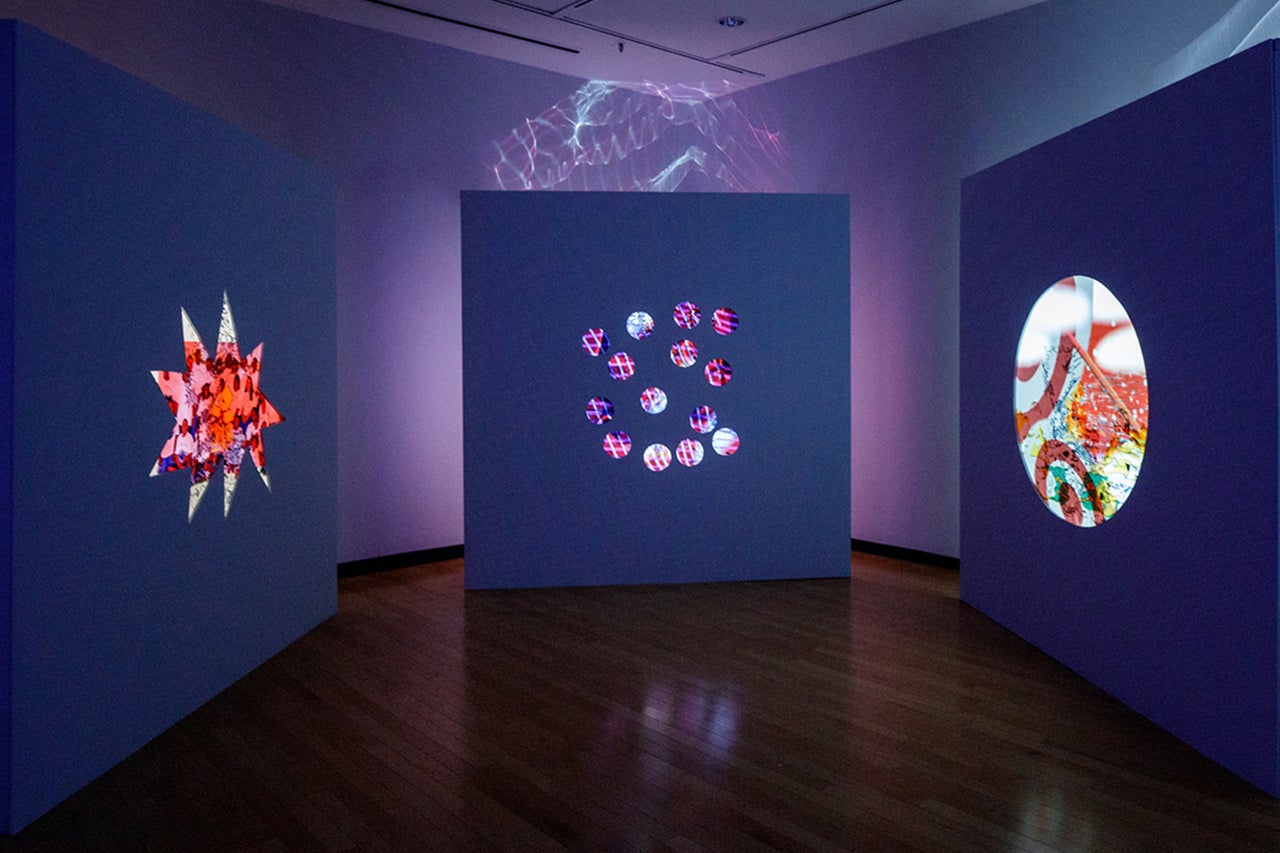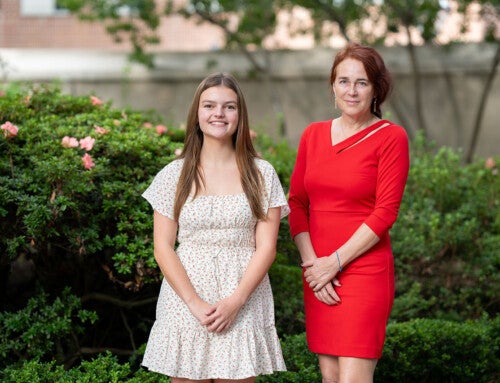Above: An immersive installation featured in the Halsey Institute exhibit ‘You Are Here.’
After a year of seeing things two dimensionally, the freedom to step inside an art gallery and immerse yourself in a three-dimensional experience is thrilling. The sounds and colors make the space come alive when the exhibition is tangible, rather than virtual.
The Halsey Institute of Contemporary Art has long excelled at this kind of immersive experience. From Jennifer Wen Ma’s Cry Joy Park—Gardens of Dark and Light to Erwin Redl’s Rational Exuberance, the Halsey has consistently curated exhibitions that enliven the senses. Two new exhibitions: Dan Estabrook: Wunderkammer and Jibade-Khalil Huffman: You Are Here continue in that vein. The exhibitions opened in May and are on view through July 17, 2021.
According to Halsey director Katie Hirsch, artist Jibade-Khalil Huffman’s work You Are Here defies definition. Using lights, video, audio, text and print, his installation transforms the dormant halls of the gallery into a dynamic setting, one that is in motion and it feels as if the ground is shifting beneath you. Each visit to take in the exhibit is unique for viewers, who at different times will experience alternate versions of the cinematic, streamed art.
“Huffman pulls us in, if just for a moment, to focus on the here and now,” says Hirsch. “His work compels you to stay, to watch, to listen, to reflect on the space around you and your own roles within it.”
The context layered beneath the surface of his work explores the contrasting ways in which people of color see themselves and how they are seen by the media. Trained as a poet, Huffman’s process is similar to storytelling and includes writing narratives, hiring performers, shooting video and layering elements of video gaming technology into the final product. But the fascinating part is that the product is never really final. Commissioned by the Halsey, You Are Here will travel to other cities and continue to evolve in each new location.
Although You Are Here and Wunderkammer are separate exhibits, both artists share an interest in altering the viewer’s point of view. Huffman uses contemporary elements like video games, while photographer Dan Estabrook uses 19th-century techniques, like salt prints and tintypes, to reimagine images from a 21st-century perspective. Walking from one gallery to the next feels like moving from a church to a disco.
Estabrook’s palette is muted. He incorporates images of objects like knives, a skull and a shoe into the photograph to elicit a sense of unknowing for the viewer, a questioning of perspectives between what is a lie and what is the truth.
“Estabrook’s work serves as an exploration of how images exist in the physical world, and how artists can manipulate them to make them different than what they represent,” says Bryan Granger, director of the exhibitions and public programs at the Halsey. “His use of antique photographic techniques reconnects the medium to the natural world and helps remind us that the plethora of images that bombard us every day are reproductions.”
Estabrook says there is a magic in working with antiquated techniques.
“One of the most amazing things about being an artist is you are speaking to yourself from the past to the future almost always,” shares Estabrook. “It really is our only language for the irrational. And so much of being alive is irrational. For me, a good photograph elicits a bodily response. If you’re going to cross the room and spend time with my artwork, I want to give you something to discover within the piece itself.”
Together, You Are Here and Wunderkammer will trigger a bodily response, upholding the Halsey’s 26 years of high-caliber exhibitions under the direction of Mark Sloan, who retired last year. The exhibitions are reflective of Granger’s and Hirsch’s expertise and vision for the future of the Halsey.
“The institute’s emphasis on supporting innovative artists and championing diverse ways of thinking is a meaningful mission for us to carry out on the campus and in our greater community,” says Hirsch. “What I will do as director is find new ways to amplify our existing strengths. One example is my plan to continue to diversify our voice and reach by bringing in more guest curators. I’m excited to continue to offer new perspectives and experiences to our campus through this program.”
The Halsey has reinstated normal, gallery hours, Monday – Saturday from 11 a.m. – 4 p.m. and until 7 p.m. on Thursdays. Upcoming events include:
- Curator-led Tour of Wunderkammer and You Are Here
Thursday, July 15, 7 p.m.
This event will happen both in-person and on Zoom
Open to all levels of membership
RSVP to [email protected] with your preference of in-person or virtual participation. The Halsey can host a maximum of 25 people in the galleries for this event. Those who would like to attend in person must RSVP to secure a spot in the galleries or to receive a Zoom link and passcode to access the event online. - A Safe Send-off: A closing event for Wunderkammer and You Are Here, featuring Dan Estabrook
Friday, July 16, 5 p.m. – 7 p.m.
This event will happen in the Halsey Institute galleries
Free for all to attend. Email [email protected] with questions. The Halsey is able to host a maximum of 50 individuals in the galleries at any one time during this event. In compliance with the College of Charleston’s precautions against the spread of COVID-19, all visitors to this event, regardless of vaccination status, must wear a face mask inside the galleries and observe physical distancing while socializing.






